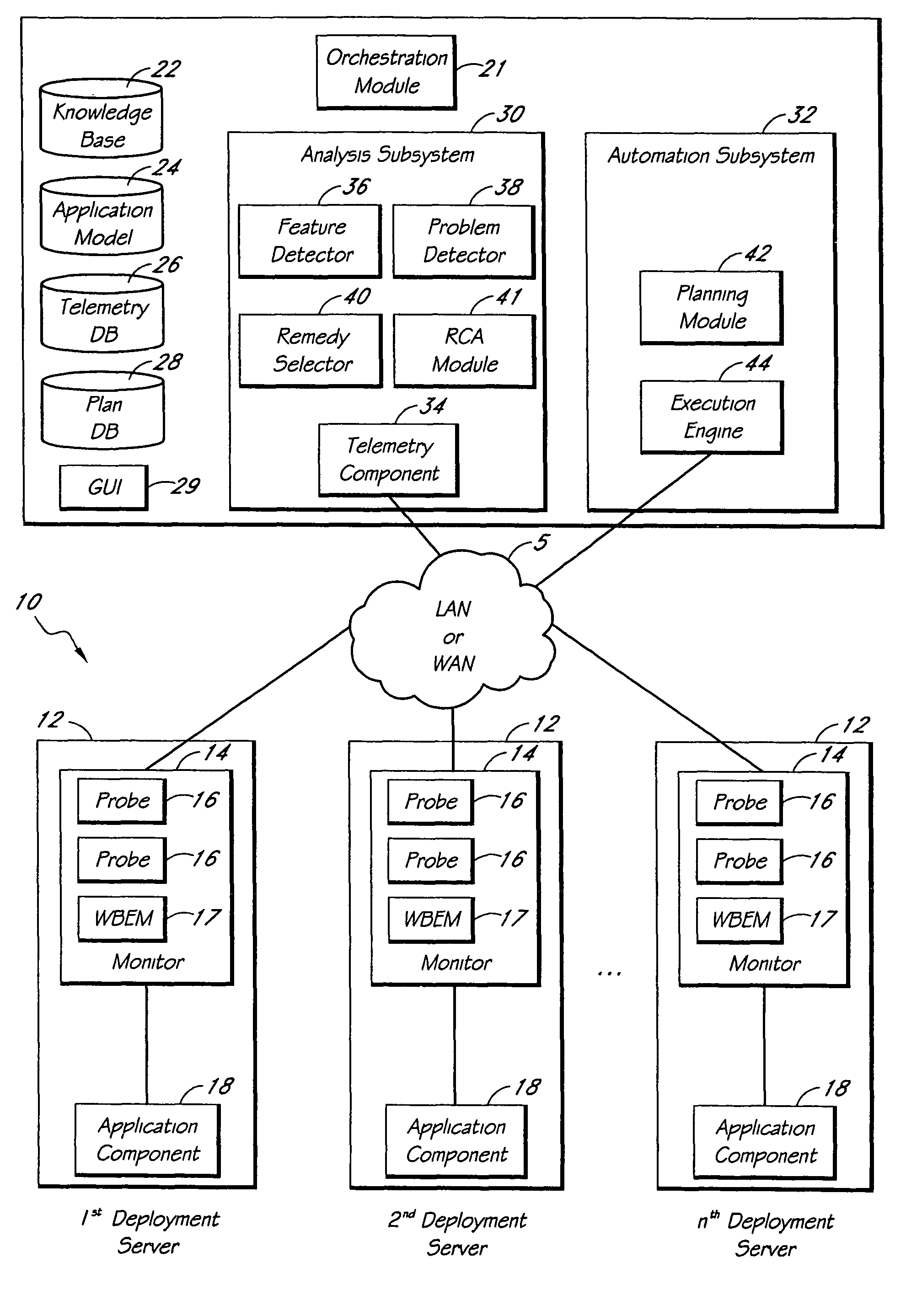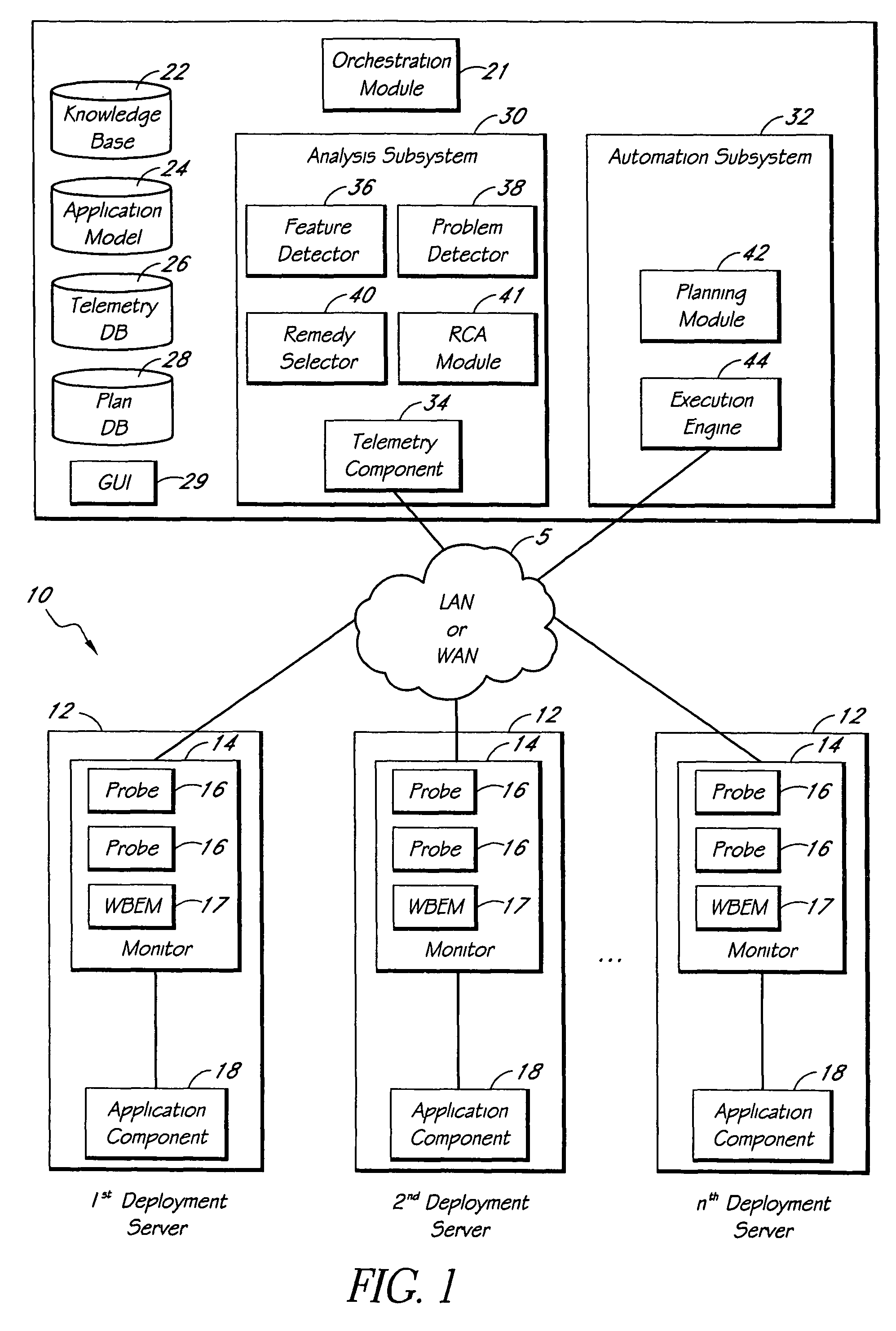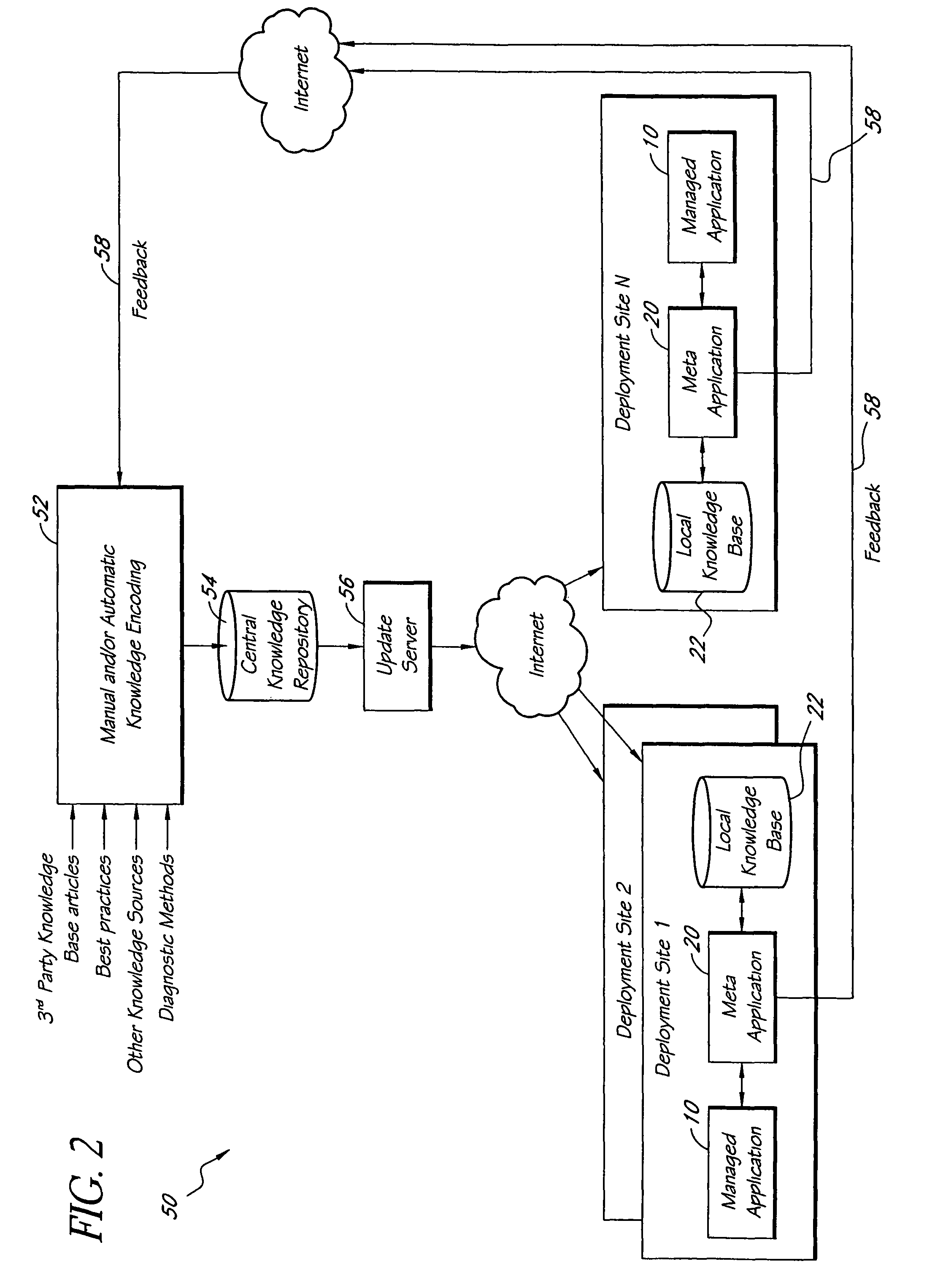Automated detection of problems in software application deployments
a software application and automatic detection technology, applied in the field of software management, can solve problems such as multiple problematic events, reduce the operational efficiency of its staff, and products that do not provide automated analysis of monitored data
- Summary
- Abstract
- Description
- Claims
- Application Information
AI Technical Summary
Benefits of technology
Problems solved by technology
Method used
Image
Examples
example
[0514]This section describes an example in which a meta-application 20 uses encoded information extracted from a knowledge base article to diagnose and remedy a particular problem in a deployment 10 of Microsoft Exchange™. FIGS. 22A and 22B together show Microsoft™ Knowledge Base Article ID No. 815759. This particular article describes a problem in which public folder hierarchy messages are stuck in outgoing queues in an Exchange™ 2000 server. The article identifies, under the “SYMPTOMS” heading, two particular warning or information messages that may be logged in the application log. The articles also indicates, under the “CAUSE” heading, that the issue may occur when the “Everyone” group is explicitly denied permissions on both of two listed objects.
[0515]The knowledge base 22 of the meta-application 20 includes a logic rule that describes this problem. The rule includes two inexpensive feature predicates corresponding to the warning log messages, two inexpensive feature predicate...
PUM
 Login to View More
Login to View More Abstract
Description
Claims
Application Information
 Login to View More
Login to View More - R&D
- Intellectual Property
- Life Sciences
- Materials
- Tech Scout
- Unparalleled Data Quality
- Higher Quality Content
- 60% Fewer Hallucinations
Browse by: Latest US Patents, China's latest patents, Technical Efficacy Thesaurus, Application Domain, Technology Topic, Popular Technical Reports.
© 2025 PatSnap. All rights reserved.Legal|Privacy policy|Modern Slavery Act Transparency Statement|Sitemap|About US| Contact US: help@patsnap.com



